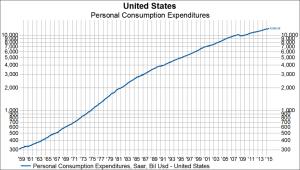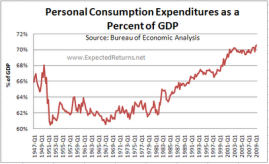Who is Lying on the Procrustean Bed?: Current Historians of the World, Denationalize Ourselves!
By: Naoki Odanaka (Tohoku University)
Abstract: This paper aims to analyze and evaluate the arguments presented in the Writing the Nation series (hereinafter WtN), targeting particularly its Vol. 2 entitled Setting the Standard (hereinafter StS). In a globalized world, do we historians still need to talk about national history, that is, the practice of writing the history of nations or should we not instead seek to produce historical works suitable for the globalized world, including global histories?
URL: https://econpapers.repec.org/paper/tohdssraa/53.htm
Distributed by NEP-HIS on 2017-04-09
Review by: Stefano Tijerina (University of Maine)
Naoki Odanaka argues that the present era of globalization demands that the historian abandons its state-centered focus and instead begins to construct history from a global perspective in order to use history as an instrument to understand how we reached the current political, economic, political, and cultural dynamics. His argument departs from the conclusions of the Writing the Nation series, and more particular volume 2 of that series, where a consensus among almost 100 historians was reached that a refocus of the study of history was necessary in order to adapt to current realities.[1] Odanaka asks whether the current focus on “national history” is relevant or if historians should instead “produce historical works suitable for the globalized world;” in other words, should they instead engage in the production of global histories? [2] Odanaka does not discard the relevance of national history but instead suggests we move toward a global analytical approach that connects and provides a more holistic understanding of developments such as free trade, multilateralism, the emergence of trading blocks, geopolitical transformations, movements of people and commodities, and technology.
National histories, suggests Odanaka, continue to serve their purpose of nation building.[3] They are important tools for the construction of national identity; they “legitimize the existence” of the nation-state.[4] From his perspective, there is no denial that the nation-state continues to be relevant, and in some regions the concept “has grown stronger,” but globalization has inevitably impacted the political, economic, social, cultural, and environmental development of each nation.[5] The dynamics of globalization have “destabilized” the lives of private, public and social actors, forcing them to “cling” to their national identities as they become challenged by the flow of goods, ideas and people, and it has been the role of the traditional historian to keep the construct of the nation-state alive in spite of the changing dynamics.[6] Odanaka highlights the flow of immigrants from the Middle East to Europe and the impact that this has had on the nation-state narrative, forcing the co-existence between the global and the national interpretations of history.[7]
 The author’s Euro-centric focus impedes him from moving beyond the North-South dynamics of globalization. A more holistic analysis of South-South and North-North dynamics would have strengthened his argument, since the legitimization of the nation-state is challenged by transformative historical realities within the global North and the global South as in the case of Venezuelan-Colombian relations or British and European Union relations that may only be explained through transnational global history.
The author’s Euro-centric focus impedes him from moving beyond the North-South dynamics of globalization. A more holistic analysis of South-South and North-North dynamics would have strengthened his argument, since the legitimization of the nation-state is challenged by transformative historical realities within the global North and the global South as in the case of Venezuelan-Colombian relations or British and European Union relations that may only be explained through transnational global history.
Naoki Odanaka does agree that current realities may not be explained through the cohesively confined borders of the nation-state, because doing so leads to “methodological nationalism.”[8] There is no exclusivity anymore; borders have become very porous and in some instance they have completely disappeared as in the case of commercial trade under the North American Free Trade Agreement (NAFTA) or as in the case of global human and narcotics trafficking.
Therefore, says Odanaka, historians need to center their research strategy on “other frameworks of historical research.”[9] He suggests new approaches such as non-spatial focuses or “non-national spatial identities.”[10] His critical views of the nation-state approach impede him however from considering other spatial dimensions of historical analysis that, although relying on the nation-state, only incorporate the nation-state as one of many transnational actors within the more holistic analysis. For example the labor history of oil that forces the historian to see not only labor as a transnational issue, but corporations, management culture, institutional frameworks, technology, commercialization, transportation, marketing, and consumption as well.
Noaki Odanaka concludes by saying that the professionalization of the historian depends on the traditional notion of the nation-state as the central focus of historical narrative. There is a notion that there cannot be a historian without the nation-state, thus the state-centered focus of the local and international institutions that promote and justify the profession and science of history. From the beginning, the methodology became state-centered, thus his argument about the prevalence of “methodological nationalism” and the need to change this culture from within the profession.[11] Odanaka therefore suggests that a shift away from nation-state dependency demands institutional changes as well as a revision of the science’s methodology.
History may no longer be used as an instrument for the justification and preservation of the nation-state. Odanaka would agree that global and transnational approaches to the study of history may serve as an instrument to help societies look at themselves in the mirror, leading them to question traditional views by breaking the barriers of imaginary borderlands that currently impede the public from seeing the historical interconnectivity that has always existed between humans, commodities, ideas, cultures, and physical environments. History may serve as an instrument to break down the status quo, debunking the sovereignty of the nation-state, a reality that is already visible under the new dynamics of globalization. This might mean that historians may cease to exist as agents of the nation-state and instead serve as agents of humanity.[12]
 Odanaka recommends that professional historians self-reflect on their responsibility to humanity.[13] This is challenging, particularly for historians in the Global North who are writing and researching from a position of privilege as well as for those historians in the Global South clinging to fragile institutional and nation-state structures that are quickly being dismantled by the market forces of globalization. Odanaka reminds historians to reflect on the current political, economic, social, cultural, technological, and environmental realities in which they are living.[14] He reminds historians that their job is to connect the past with the present in order to decipher and explain contemporary realities, constantly aware of identity and spatial constructs that limit our scope as researchers.[15]
Odanaka recommends that professional historians self-reflect on their responsibility to humanity.[13] This is challenging, particularly for historians in the Global North who are writing and researching from a position of privilege as well as for those historians in the Global South clinging to fragile institutional and nation-state structures that are quickly being dismantled by the market forces of globalization. Odanaka reminds historians to reflect on the current political, economic, social, cultural, technological, and environmental realities in which they are living.[14] He reminds historians that their job is to connect the past with the present in order to decipher and explain contemporary realities, constantly aware of identity and spatial constructs that limit our scope as researchers.[15]
[1] For more information see volume 2 Setting the Standard; Ilaria Porciani and Jo Tollebeek, eds., “Setting the Standard,” in Writing the Nation series, ed. Stefan Berger, Christoph Conrad, and Guy Marchal (Basingstoke: Pelgrave Macmillan, 2012)
[2] Naoki Odanaka, “Who is Lying on the Procrustean Bed?: Current Historians of the World, Denationalize Ourselves!” (paper, review forum for the Writing the Nation Series, Sogan University, Seoul, Korea, April 22, 2016), 1.
[3] Ibid., 1.
[4] Ibid.
[5] Ibid., 2.
[6] Ibid.
[7] Ibid.
[8] Ibid.
[9] Ibid.
[10] Ibid.
[11] Ibid., 5.
[12] Odanaka points out the case of local historians in France and Germany as well as Japanese historians that went against the status quo in order to illustrate alternatives to traditional nationalist approaches to history. Ibid., 5-6.
[13] Ibid., 8.
[14] Ibid.
[15] Ibid., 9.


















